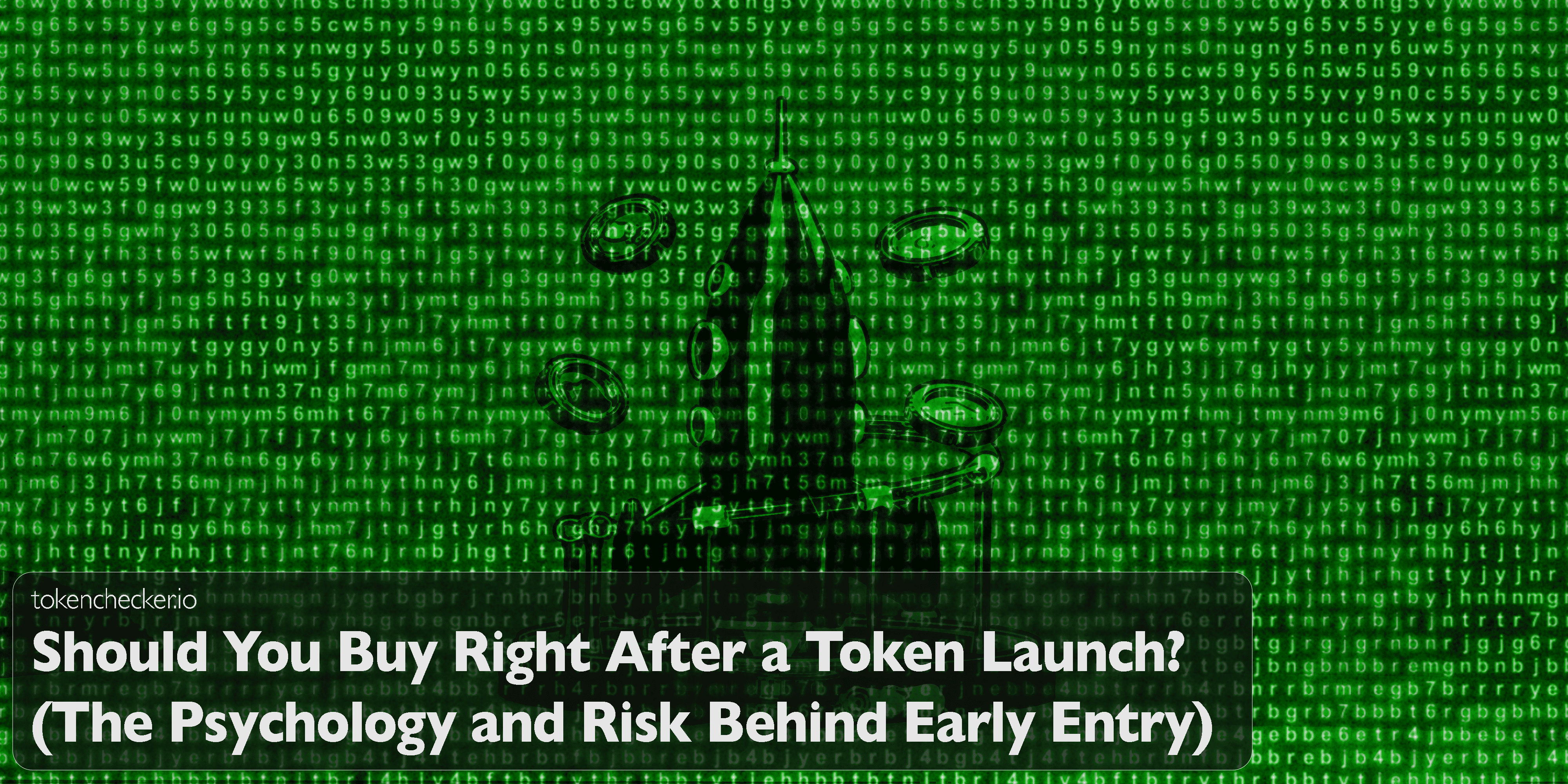
Should You Buy Right After a Token Launch? (The Psychology and Risk Behind Early Entry)
A new token launches. The chart spikes. Telegram is on fire. You feel it that itch to click “buy” before the price leaves you behind. Welcome to the most dangerous few minutes in crypto.
Buying a token immediately after launch might seem like the best shot at life-changing gains. But it's also the moment when risk is at its peak, emotions override logic, and scams are most likely to strike. In this article, we unpack the behavioral traps, technical dangers, and strategic alternatives every investor should understand before diving into a freshly launched token.
The Launch Trap: Why It Feels So Tempting
There’s a psychological cocktail that hits the moment a token goes live:
- FOMO: If you don’t buy now, someone else will make the 100x.
- Survivorship Bias: You remember the one token that mooned, not the hundred that died.
- Overconfidence: You believe you can outsmart the whales and bots.
- Urgency Bias: The timer hits zero. The site says “LIVE.” You react before you research.
And the whole market rewards this mindset. Screenshots of wallets flipping $100 into $50,000 spread faster than news of losses. That’s by design. But here’s the truth: early buying isn’t just risky it’s often exploitative.
What Really Happens After a Token Launch
Most new tokens follow the same rough pattern:
- Speculation Spike: Bots and insiders pump the price.
- Liquidity Thins Out: The price becomes fragile tiny trades move the chart.
- Insiders Sell: Early buyers, devs, or influencers dump on retail.
- Rug or Retrench: Either the project is real and price stabilizes or it collapses.
Even in legitimate launches, the early phase is pure chaos. One wrong buy can leave you holding tokens no one wants, at a price no one will pay.
Statistic: Over 65% of ICOs lose value in the first month. Many destroy value on launch day.
Launch Models and What They Mean for Risk
- ICOs: ✔️ Open access ❌ No regulation, high scam rate
- IEOs: ✔️ Exchange vetting ❌ Expensive for projects, less liquidity
- IDOs: ✔️ Decentralized, smart-contract driven ❌ Easy to exploit with bots
- Fair Launches: ✔️ No insider advantage ❌ Still volatile, but more transparent
Projects use these models to attract different types of buyers. But none are immune to the same early chaos: thin liquidity, price spikes, and exits by early whales.
Red Flags at Launch
- 🚩 Anonymous devs or no visible team
- 🚩 No audit or vague whitepaper
- 🚩 Inflated social media with no real community
- 🚩 Claims of “100x potential” before utility is delivered
- 🚩 Mintable contracts or ownership not renounced
- 🚩 Massive wallet allocations held by insiders
Many of these can be identified before you buy. You just need the right tools.
tokenchecker.io: The Early Buyer’s Safety Net
tokenchecker.io exists to keep early buyers from becoming exit liquidity. It lets you scan a token in seconds and check:
- Contract Analysis: Can the dev still mint? Freeze wallets? Change fees?
- Honeypot Simulation: Can you actually sell what you’re about to buy?
- Liquidity Lock Check: Is the LP locked, burned, or sitting in a dev wallet?
- Creator Wallet Tracker: Is the dev buying, holding, or dumping?
- Holder Distribution: Are a few wallets controlling the supply?
- Sniper Detection: Are bots front-running the launch?
Before you click “buy,” copy the contract address into tokenchecker.io. You might find you’re about to step into a trap.
Strategic Alternatives to Blind Buying at Launch
- Wait for the Dust to Settle: Let the price stabilize. Watch the first hour or day of trading. This is when real red flags show up.
- Dollar-Cost Average (DCA): If you really believe in the project, spread your buys out over days or weeks. It smooths out volatility and lowers your risk of buying the top.
- Study the Tokenomics: High tax tokens, unlimited mint, or weak LP means even a good-looking chart can collapse in minutes.
- Use Smaller Position Sizes: Don’t go all-in on the first candle. Treat new tokens as speculative and allocate accordingly.
- Avoid Reacting to Hype: If you hear “This is the next SHIB,” pause. That’s the oldest bait in the game.
Final Thoughts
Buying at launch is like walking into a battlefield with no armor. The opportunity is real but so are the risks.
If you treat crypto like a slot machine, it’ll take your money like one. But if you slow down, use data, and approach launch tokens with skepticism, you can avoid the worst traps and position yourself for smarter entries.
Before you ape into the next “gem,” ask one question: Is the hype louder than the facts? tokenchecker.io will tell you. And it might save you from the kind of losses that never make it to Twitter.